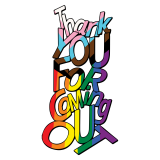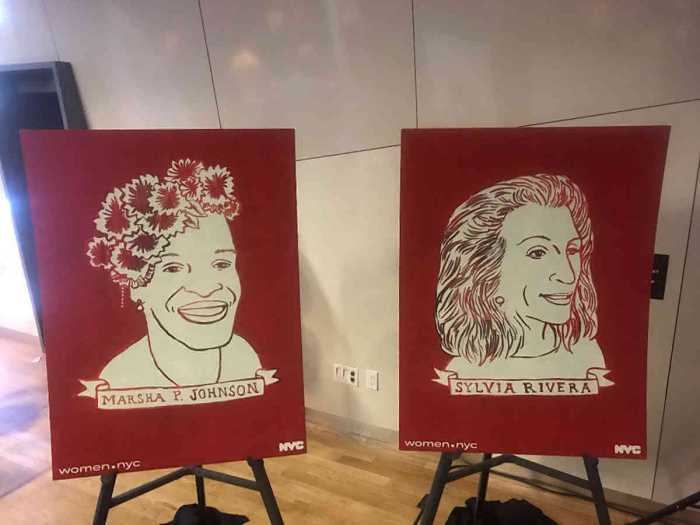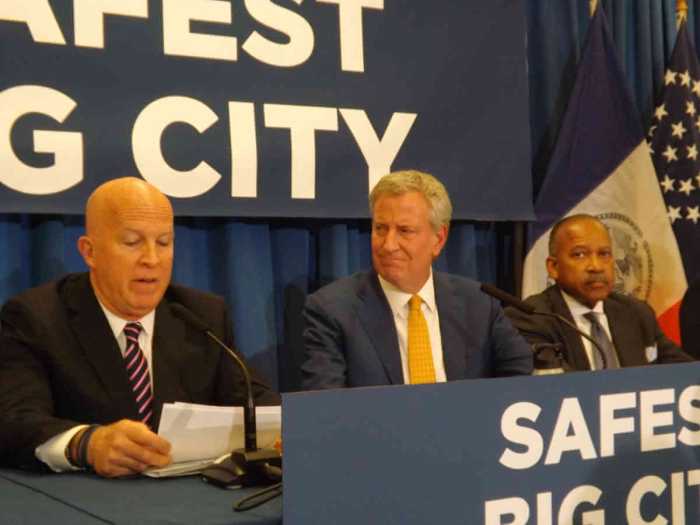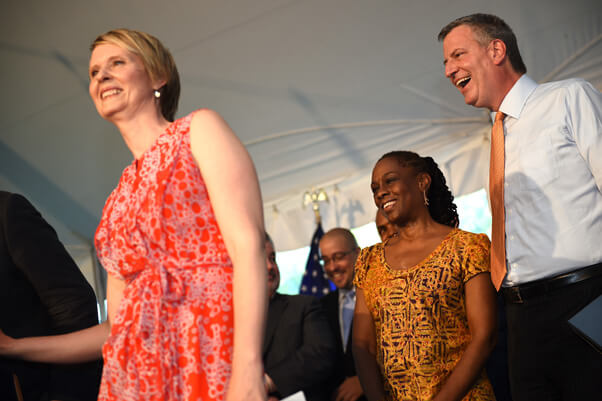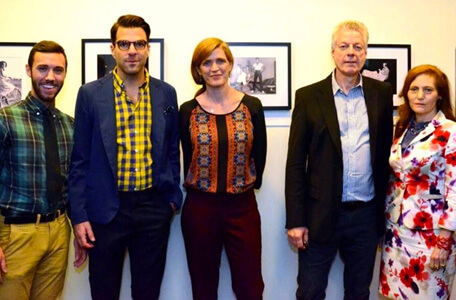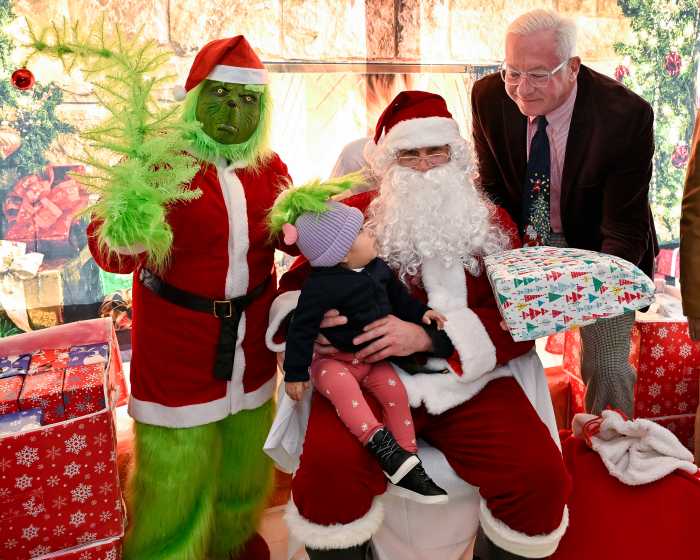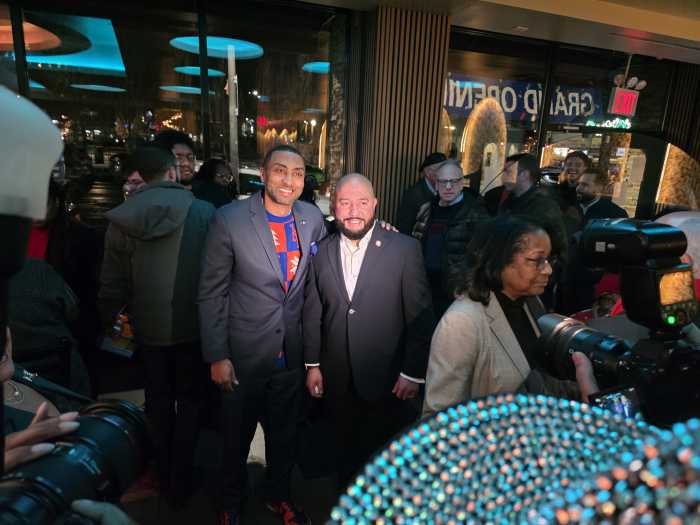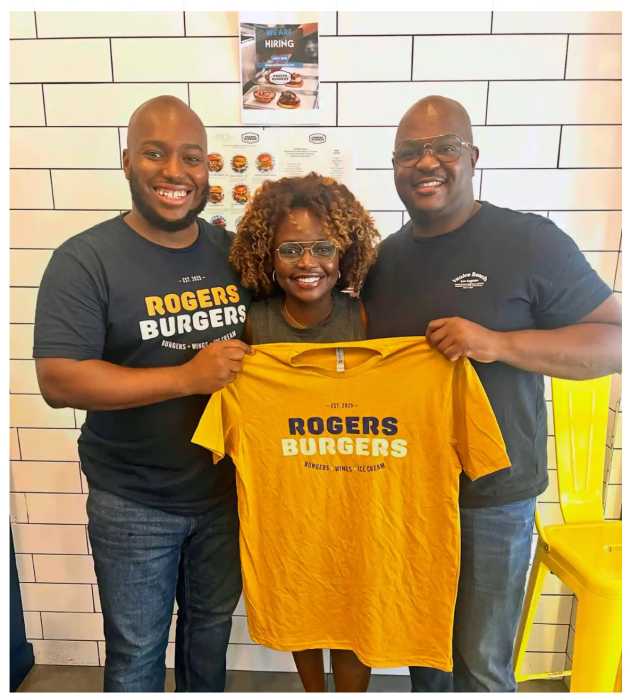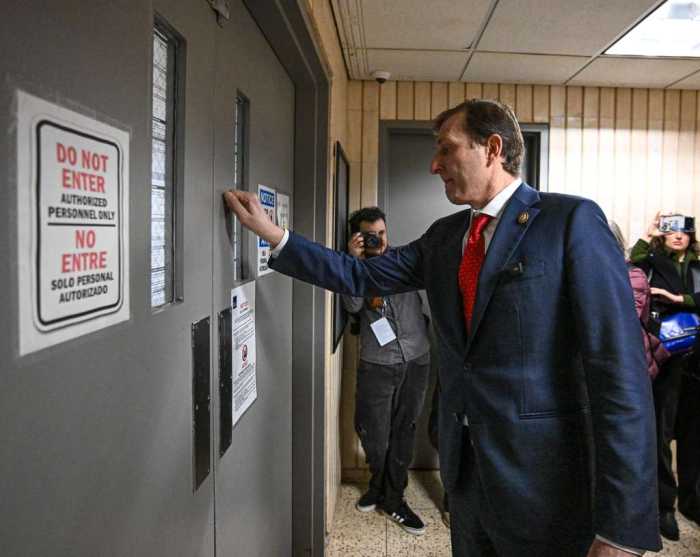Film shot by the NYPD’s political surveillance unit at an August 1969 demonstration in Midtown Manhattan shows an early appearance of the Gay Liberation Front (GLF) as it joined other left and radical groups.
“The rally and demonstration which was conducted in front of Penn Station on 7th Avenue, between 31st and 33rd streets consisted mainly of speechmaking and the reading of letters from imprisoned GIs by selected leaders of the sponsoring groups,” wrote detectives in a report on the August 2, 1969 demonstration. “In essence all the speeches were geared to condemnation of the US imperialist policy, and the torture and abuse of military prisoners in various stockades around the country.”
The rally and march were held to demand the release of political prisoners and members of the Armed Forces who were being held in military stockades. Among military prisoners, the focus was on the Fort Dix 38 who were 38 prisoners charged with crimes committed during June 5, 1969 rioting at Fort Dix in New Jersey.
The rally and march were produced by the Students for a Democratic Society (SDS), the Fifth Avenue Vietnam Peace Parade Committee, Youth Against War and Fascism (YAWF), and the American Servicemen’s Union (ASU). The ASU and YAWF were associated with the Workers World Party (WWP), a group that spilt from the Socialist Workers Party in 1959. The font on the banners, including the interlocked female/ female and male/ male graphics that were GLF’s symbol, are readily recognizable as the work of the WWP.
The three films that detectives shot are silent and last just over nine minutes altogether. The films were digitized by the city’s Department of Records and Information Services, which manages the Municipal Archives. When they shared the films with Gay City News, archivists said they knew only that the film was shot on August 2, 1969.
The newspaper reviewed the NYPD political surveillance unit’s records for the SDS, ASU, YAWF, and the Fifth Avenue Committee and found a single draft report on the protest in the SDS files. Files on GLF previously released by the FBI show that a special agent from that agency was also at the protest.
The NYPD was required to release records compiled by its political surveillance unit, which has had various names since it began its spying in the early 20th century, as part of a settlement in a federal lawsuit. The records on LGBTQ groups are a small, but significant part of the collection. To date, the archives include records through the early 1970s.
Detectives did not name GLF in their report or comment on the GLF banner, though they did quote the text on three other banners. As was the practice of detectives in the unit, they included a list of people they recognized at the protest. None of the names was immediately recognizable as associated with GLF. The FBI report noted the presence of GLF in its brief report about the protest, indicating that agency knew of GLF less than a month after the group was founded.
Detectives put the crowd size at 300 and noted that eventually about 125 people first marched north then west then headed south into oncoming traffic on 7th Avenue. The group held a rally at the “Veterans administration building” at 24th Street and 7th Avenue, the report said.
Gay City News shared one of the three films with former GLF members. Allen Young, who was working for the Liberation News Service in August 1969, recognized Dan Smith and Ralph Hall, two GLF members, in the film. Author Perry Brass recognized Smith and Morty Manford, also a GLF member, in the film.
GLF members joined a second protest at Fort Dix in October 1969. That demonstration brought thousands to the base. Military police and armed troops used tear gas on the demonstrators.
While the LGBTQ organizations that formed immediately following the Stonewall riots in June 1969 were often founded by people who had experience in the women’s, anti-war, civil rights, socialist, and other left-leaning movements, GLF’s expansive vision of making common cause with other radical groups quickly led to some members forming the Gay Activists Alliance (GAA) in late 1969. GAA chose to focus exclusively on issues of importance to the LGBTQ community, though the two groups did work together on a number of issues.


